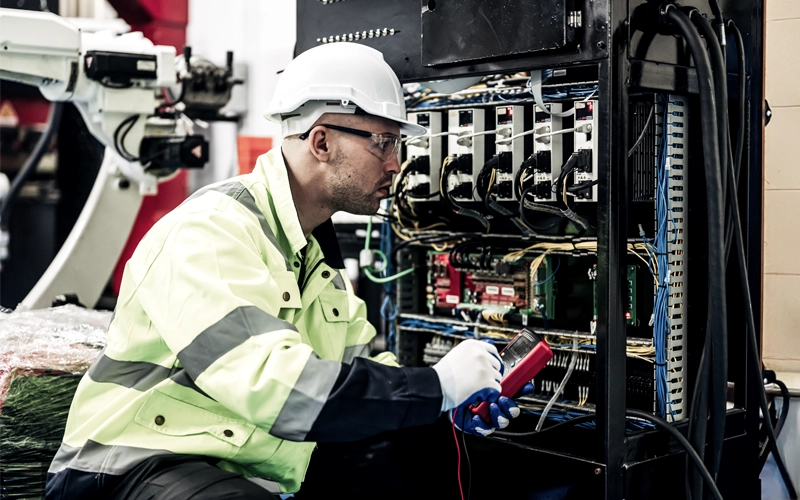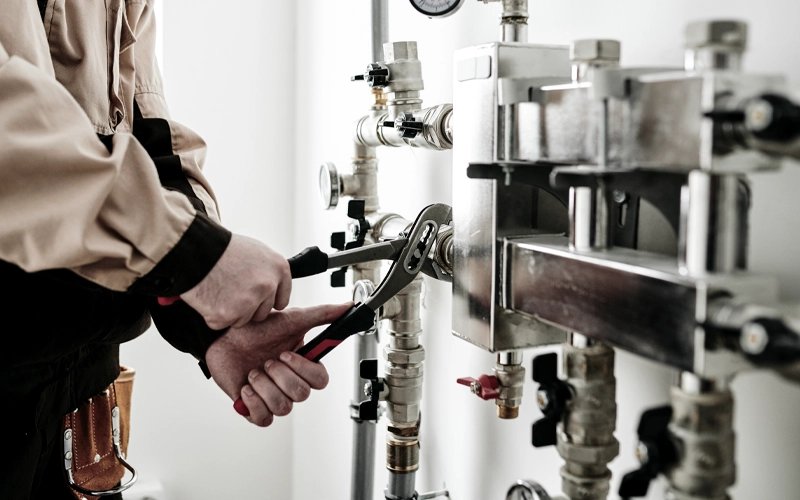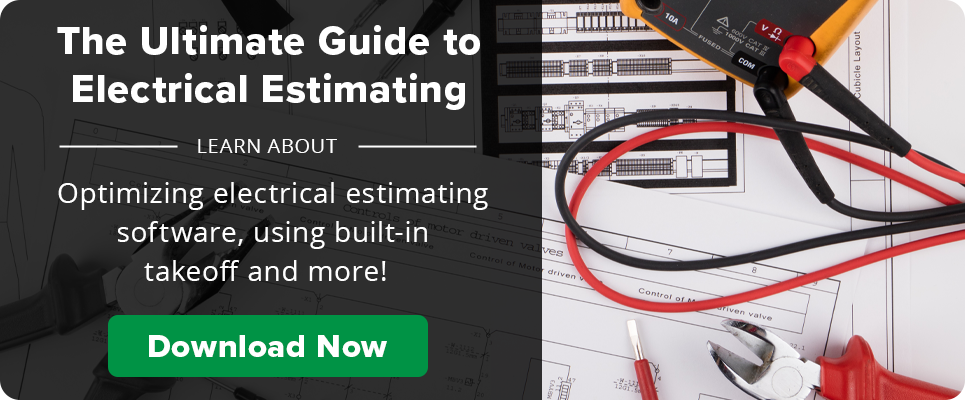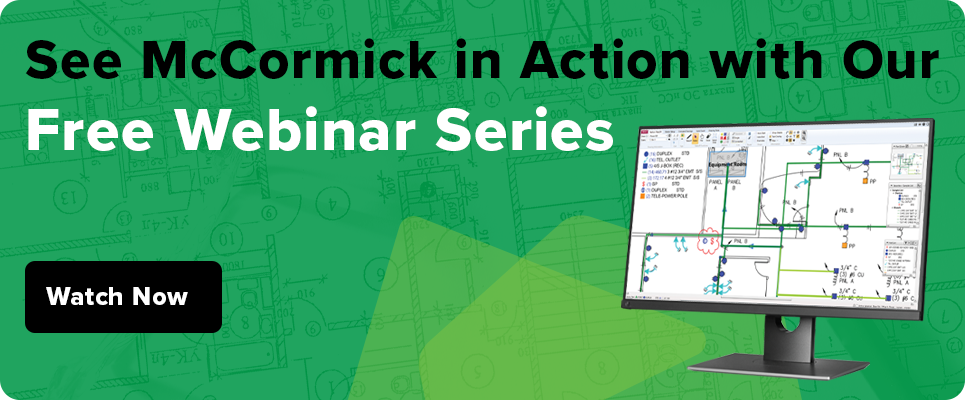by Paul Wheaton
June 25, 2024
Share Article
Learning how to bid electrical jobs effectively is crucial for success in the competitive electrical contracting industry. Electrical estimating jobs are tricky. They involve varying voltages, different types of wiring or piping, and (seemingly) an innumerable number of outlets. With all these complex specifications, electrical bids are expected to be accurate and tailored to the trade. And that doesn’t even cover what’s needed for competitive electrical estimates.
According to Blackridge Research and Consulting, a bidder will likely win one out of every eleven submissions. This may sound dauntingly low but there are strategies available to quickly start producing more successful bids.
Winning more commercial electrical jobs as a commercial electrical contractor requires a combination of accurate estimating, strategic planning, and effective communication. Below, we have listed some of our top tips to enhance your chances.
Key Takeaways for Electrical Estimators:
- By taking the time to create accurate and detailed estimates, you’ll increase your chances of winning projects.
- Examine all blueprints, specifications and other project documents to ensure you tailor your bid specifically to the project’s needs.
- Be aware of the latest technologies and practices in commercial electrical work so you can propose innovative solutions that improve efficiency, sustainability, and cost savings for clients.
- Establish efficient processes like developing standardized templates and checklists to minimize the chance of calculation errors or omissions in your estimates.
- Monitor past successful projects to identify what worked well and areas for improvement. Develop key performance indicators (KPIs) to measure the success of your estimating efforts so you can refine your processes and avoid repeating past mistakes.
- Invest in reliable construction estimating software that can handle complex commercial projects and offer trade-specific databases, industry-standard conditions, and customizable templates.
Tips to Win More Commercial Electrical Jobs
The following seven proven strategies will help you create more competitive bids, improve your win rate and grow your electrical contracting business. Each tip builds on fundamental best practices while incorporating modern tools and techniques that successful contractors use to stand out in today’s competitive marketplace.
Tip #1: Focus on Creating Detailed Electrical Estimates
One of the pitfalls in construction electrical estimating is that it’s easy to miss hidden expenses when creating construction bids. And potential clients, of course, are more inclined to reject bids that seem incomplete.
To win bids and build trust, make sure your estimates include everything — there are no costs too insignificant to exclude. Understanding how to bid electrical jobs requires attention to both direct and indirect costs. Always consider:
Direct costs:
- Materials (wires, panels, fixtures)
- Labor (wages, payroll taxes, benefits)
- Subcontractor fees
- Demolition costs
Indirect costs:
- Equipment rental
- Permits and inspections
- Overhead
- Contingency
- Preventative maintenance for equipment
Use a clear and organized bid sheet that shows how you calculated your final price. Always review your calculations to ensure there are no errors, as even a small mistake can lead to significant cost discrepancies. By taking the time to create accurate and detailed estimates, you’ll increase your chances of winning projects.
Tip #2: How to Bid Electrical Jobs by Understanding Project Scope
Understanding the project scope is crucial for winning commercial electrical jobs. Examine all blueprints, specifications, and other project documents to ensure you fully recognize every expectation. This makes it easier to tailor your bid specifically to the project’s needs.
With a clear picture of the project scope, you can accurately estimate labor hours and determine appropriate materials. A well-defined scope allows you to precisely identify all the electrical work involved, including:
- Number of outlets
- Total lighting fixtures
- Amount of panels
- Any specific equipment requirements
Fully knowing the scope also helps avoid unexpected project costs later. Whenever possible, visit the jobsite to examine the physical conditions and constraints of the environment. By doing so, you can identify potential issues early on and factor them into your bid, minimizing the need for change orders that can strain your profit margins.
Tip #3: Stay Up to Date on Industry Trends
The electrical industry is constantly evolving. New materials, regulations, and best practices emerge constantly. By being aware of the latest technologies and practices in commercial electrical work offers an opportunity for you to propose innovative solutions that improve efficiency, sustainability, and cost savings for clients.
Be sure to keep up with the current prices for materials and labor. Market rates can fluctuate, and staying in the know ensures your estimates are competitive, industry-appropriate and profitable.
As you monitor trends, be prepared to act quickly in case you notice emerging needs in the commercial sector. For example, the rise of electric vehicle charging stations presents a new opportunity for electrical contractors who understand the technology and can offer installation services. Being ahead of the curve allows you to position yourself for these new markets before your competitors.
Some other recent electrical trends include things like:
- Energy-efficient lighting systems (LEDs)
- Smart building technology for automation and control
- Solar panel integration
- New safety protocols and materials
Clients are always looking for ways to optimize their buildings, and showcasing your knowledge of these trends positions you as a forward-thinking contractor who can deliver modern, cost-effective solutions.
Tip #4: Improve Efficiency and Productivity
By having streamlined bidding processes, you can respond to bid requests faster. Clients often have tight deadlines for selecting contractors, so being the first with a well-considered proposal can give you a significant advantage.
Efficient processes like developing standardized templates and checklists minimize the chance of calculation errors or omissions in your estimates (which also conveniently eliminates the need for revisions). This can also translate to lower overhead costs, allowing you to potentially offer more competitive pricing without sacrificing profit margins.
Continuously invest in training your team on the latest construction estimating techniques and software tools. This helps you free up your team’s time and energy to focus on other crucial aspects, like project management or client communication. This improves your overall operational efficiency and allows you to take on more projects while maintaining high quality.
Tip #5: How to Bid Electrical Jobs With Professional Proposals
In the competitive world of commercial electrical jobs, developing a professional-looking estimate and submitting a well-thought-out bid is absolutely crucial for winning contracts. It demonstrates your professionalism, understanding of the project, and ability to deliver value.
Present a Professional Bid Package
Ensure your bid is well-organized and includes a cover letter, detailed scope of work, pricing breakdown, and any value-added services. A professional and competitive bid demonstrates your consideration of the project scope and your ability to meet the client’s expectations for quality, budget, and timeline.
Offer Value Engineering
Suggest cost-saving alternatives or improvements that don’t compromise on quality. By balancing accurate estimates with market awareness, you can offer competitive pricing that reflects the value you bring to the project. This can make your bid more attractive without reducing your profit margin.
Highlight Your Experience and Capabilities
The bid should highlight your expertise, experience with similar projects, and any unique solutions you can offer to address the client’s specific needs. Showcase your previous successes and any unique capabilities that set you apart from competitors.
Tip #6: Monitor and Analyze Previous Success
Monitoring and analyzing previous successful projects can be a powerful tool for winning more commercial electrical jobs.
Replicate Success
Regularly review past projects to see where estimates were accurate. By analyzing past successful projects, you can identify the key factors that contributed to a positive outcome. Replicating these successful elements in future bids and proposals increases your chances of replicating that success on new projects.
Identify Strengths and Weaknesses
Monitoring past projects allows you to not only identify what worked well but also areas for improvement. Develop key performance indicators (KPIs) to measure the success of your estimating efforts and identify areas for improvement. By analyzing these details, you can refine your processes and avoid repeating past mistakes, making your future bids even stronger.
Quantify Value Proposition
When you track the results of past projects, you can gather quantifiable data on your performance. This could include metrics like on-time completion rates, budget adherence, or client satisfaction scores. Including this data in your proposals demonstrates your ability to deliver successful projects and the value you bring to the table.
Tip #7: Leverage Estimating and Digital Takeoff Software
Invest in reliable construction estimating software that can handle complex commercial projects. You’ll streamline your processes because there are trade-specific databases, industry-standard conditions, and customizable templates (just to name a few benefits).
Leveraging estimating and digital takeoff software can be a game-changer for winning commercial electrical jobs.
Increased Efficiency and Speed
- Faster Takeoffs: Estimating and digital takeoff software automates the process of measuring materials and quantities from blueprints and drawings. This eliminates manual calculations, saving significant time, and allowing you to respond to bids quickly.
- Reduced Errors: Estimating software simplifies your estimating process while minimizing errors with features like automatic calculations and quantity takeoffs. This ensures your bids are accurate and reliable, avoiding costly mistakes.
- Streamlined Workflow: Estimating software integrates takeoff data with estimating tools, allowing for a seamless workflow. This eliminates the need for manual data entry and reduces the risk of inconsistencies between takeoff and estimates.
Improved Accuracy and Cost Savings
- Detailed Estimates: Estimating software allows you to create detailed and comprehensive estimates that account for all necessary materials, labor costs, additional expenses, and potential contingencies.
- Database Integration: Many software programs allow you to build a database of historical material costs and labor rates. This ensures your estimates reflect current market prices, helping you stay competitive and maximize profit margins.
- Reduced Waste: Accurate takeoffs help you order the exact amount of materials needed, minimizing waste and saving money on unnecessary purchases.
Enhanced Communication
- Professional Proposals: Estimating software allows you to generate professional-looking proposals with clear breakdowns of costs and timelines.
- Value-Added Services: Some software features allow you to offer value-added services to clients, like “what-if” scenarios exploring different material options or layouts.
- Advanced Collaboration: Cloud-based estimating tools allow for real-time collaboration and updates with teammates, improving accuracy and efficiency.
Electric-Specific Features
- Pre-Built Assemblies: The software automatically recognizes electrical symbols used in blueprints and drawings.
- These symbols are matched with pre-built electrical assemblies within the software’s database to include items like lighting circuits, branch circuits, panel feeds, and more.
- Precise Quantities: Automatic measuring and counting of structured cabling systems allows for an accurate count of all cabling components for more precise material quantities being ordered to avoid project delays due to material shortages.
- Auto count: The software lets users select multiple endpoints and run takeoffs between them simultaneously. This allows the estimator to generate takeoffs for multiple circuits in one go, significantly reducing the time and effort required for the takeoff process.
See How McCormick Can Help You Win More Commercial Electrical Jobs
Mastering how to bid electrical jobs effectively is an ongoing process that requires the right tools and strategies. Applying these best practices will help you have confidence in the bids you’re building. By combining these strategies, you can simplify your estimate process, reduce errors, and enhance the overall efficiency of your company’s workflow.
And if you’re an electrical estimator looking for trade-specific estimating and digital takeoff software, consider McCormick! Our system allows you to complete electrical estimating and takeoff in one system while keeping historical data stored so you can see past successes.
We offer tools that streamline the estimation process and improve accuracy and efficiency, like built-in templates per trade, so estimators can use the software to upload information quickly while building bids for commercial electrical jobs.

The Definitive Electrical Estimating Glossary



